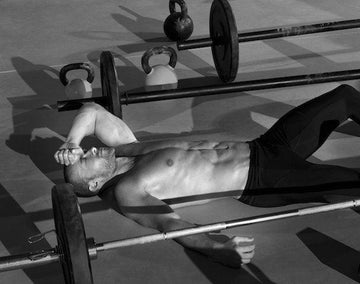Active Recovery for Increased Muscle Gains and Performance
by: Robbie Durand
Most bodybuilders finish their last set and then slam down a protein shake and head home, but spending a few more minutes doing some recovery exercise may enhance your recuperation for the next workout. The majority of research has focused on training, although most exercise-induced adaptations for muscle growth take place during recovery.
Active Recovery Enhances Muscle Recuperation
Recovery is one of the least understood and most under-researched constituents of the exercise-adaptation cycle. Rapid recovery is critical to athletes who engage in repeated bouts of high-intensity exercise. Active recovery can be described as a low-intensity activity (such as submaximal walking or cycling) used to enhance the recovery process between training sessions. The theory is that low-intensity exercise can facilitate blood flow and speed recovery. High-intensity exercise results in increased levels of both intramuscular and circulating levels of lactate. Furthermore, these increases in lactate, reflecting hydrogen ion concentration, have been shown to inhibit contractile performance and cause premature fatigue. So it is reasonable to conclude that enhancing circulation and removal of metabolic waste products can facilitate muscle recovery. Some researchers have speculated that blood lactate removal might be accelerated during active recovery and massage recovery due to increased blood flow. Active recovery is thought to work by increasing blood flow and enhancing clearance of enzymes responsible for muscle damage. Many studies examine the levels of creatine kinase, which is a marker of muscle damage. There is some interesting research to suggest that active recovery can accelerate your workout performance and recovery.
Active Recovery Reduces Post-Exercise Muscle Damage
One study compared active recovery to complete rest after exercise and found that active recovery immediately after the event encourages recovery and reduces muscle lactate levels faster than complete rest. In studies examining the effect of active recovery of rugby players, it was found that those that the players who undertook active recovery straight after a hard match showed 88% recovery to normal creatine kinase levels compared with 39% of those who just rested when retested 84 hours after the match. This suggests that light exercise can facilitate recovery compared to complete rest. This suggests that active recovery is a more effective way of enhancing muscle recuperation than becoming a complete slug and doing nothing.
 Active Recovery Reduces Post-Exercise Lactate
Active Recovery Reduces Post-Exercise Lactate
Another study compared active recovery to complete rest after hard sprinting intervals, one group rested completely while a second group exercised at 30 percent intensity between intervals. The active group reduced blood lactate levels faster and could achieve a higher power output throughout the workout. A similar study reported that light exercise can facilitate recovery as opposed to complete rest. Thirty elite male rowers took on a maximal rowing test followed by either an active recovery protocol utilizing either 25% or 50% of their maximal power output for 10 minutes. The control group engaged in passive recovery for 20 minutes; mainly they were told just to lay down and rest. Active recovery reduced lactate concentrations by 43% with 50% of max power and 15% using 25% of max power. Passive recovery elevated blood lactate levels by about 1%. Another study found active recovery encouraged lactic acid removal and helped speed recovery. Low-intensity active recovery appears to significantly reduce accumulated blood lactate and speed muscle recovery.
Next time you finish your weightlifting session, be sure to either walk on the treadmill or cycle at a low intensity for a cool down session while drinking your BCAA or whey protein drink.
McLoughlin, P.,McCaffrey,N. and Moynihan, J.B.(1991) Gentle exercise with a previously inactive muscle group hastens the decline of blood lactate concentration after strenuous exercise. European Journal of Applied Physiology 62, 274-278.
Rowell, I., Saltin, B.R., Kiens, B. and Christenson, N.J. (1986) Is peak quadriceps blood flow in humans even higher during exercise with hypoxemia? Heart Circulation and Physiology 20, H1038-H1044.
Effects of active recovery on plasma lactate and anaerobic power following repeated intensive exercise. Ahmaidi S, Granier P, Taoutaou Z, Mercier J, Dubouchaud H, Prefaut C. Medicine & Science in Sports & Exercise. 1996 Apr;28(4):450-6. PMID: 8778550
Effect of incorporating low intensity exercise into the recovery period after a rugby match. M Suzuki, T Umeda, S Nakaji, T Shimoyama, T Mashiko, and K Sugawara, British Journal of Sports Medicine, 2004 38: 436-440.
Blood Lactate Removal Using Combined Massage and Active Recovery. Micklewright, D P. 1; Beneke, R FACSM 1; Gladwell, V 1; Sellens, M H. Medicine & Science in Sports & Exercise. 35(5) Supplement 1:S317, May 2003.
Gill ND, Beaven CM, Cook C. Effectiveness of post-match recovery strategies in rugby players. British Journal of Sports Medicine 2006. 40 260-263
Suzuki M, Umeda T, Nakaji S, Shimoyama T, Mashiko T, Sugawara K. Effect of incorporating low intensity exercise into the recovery period after a rugby match. British Journal of Sports Medicine 2004. 38 436-440



 Active Recovery Reduces Post-Exercise Lactate
Active Recovery Reduces Post-Exercise Lactate














